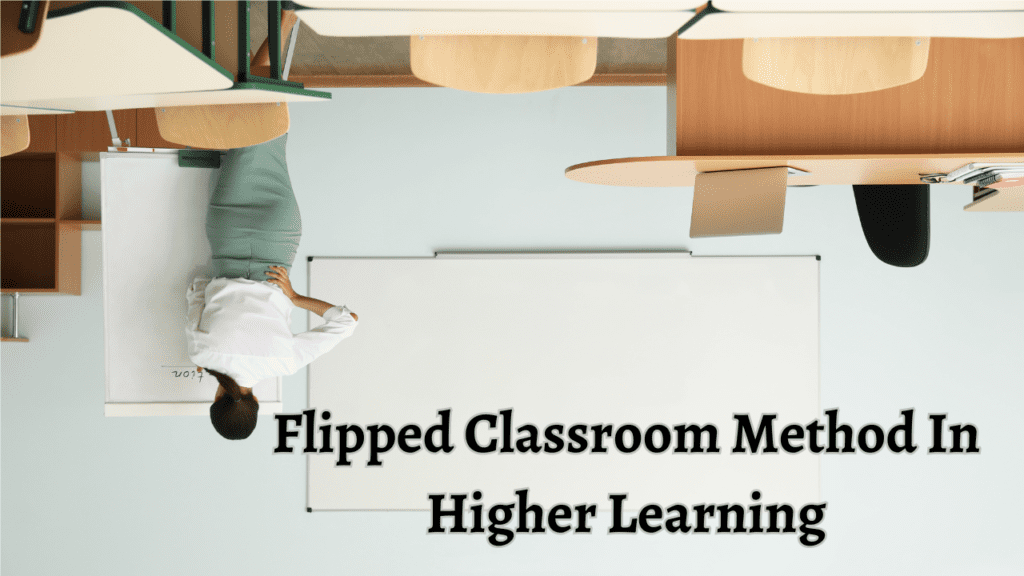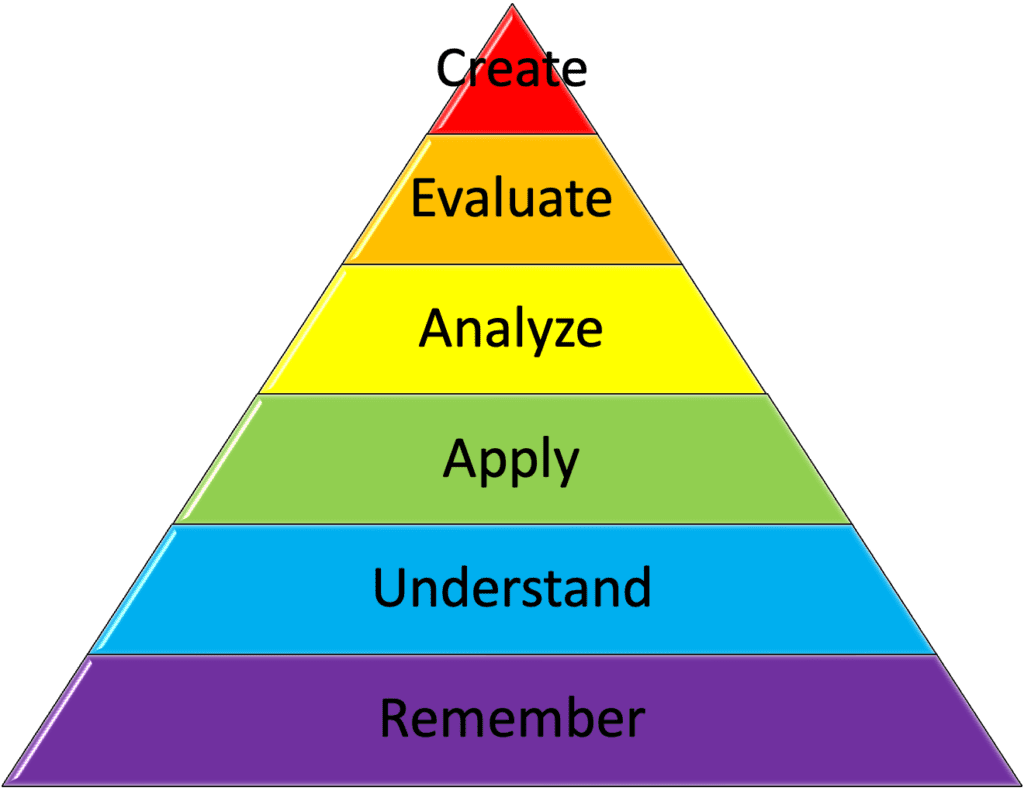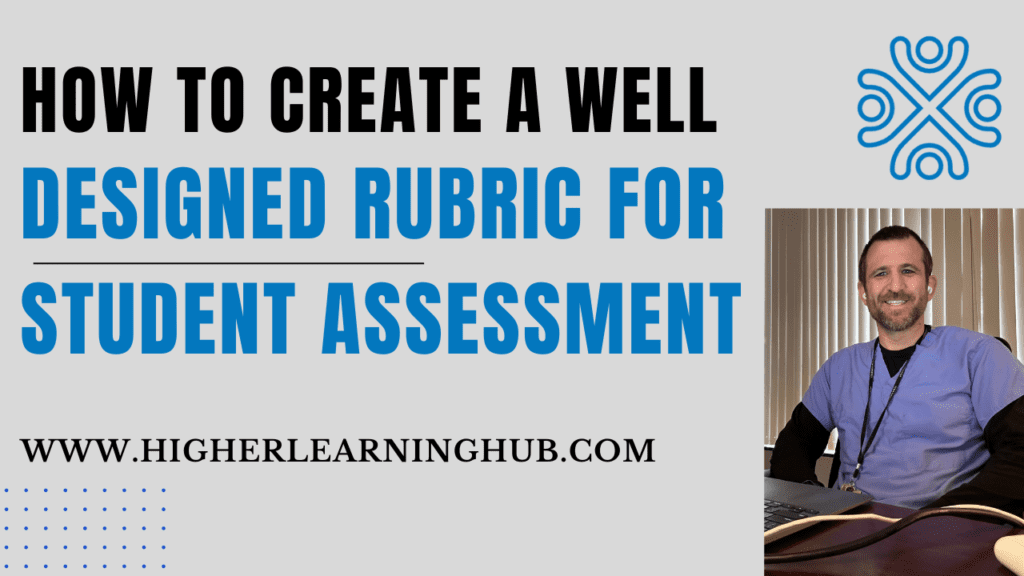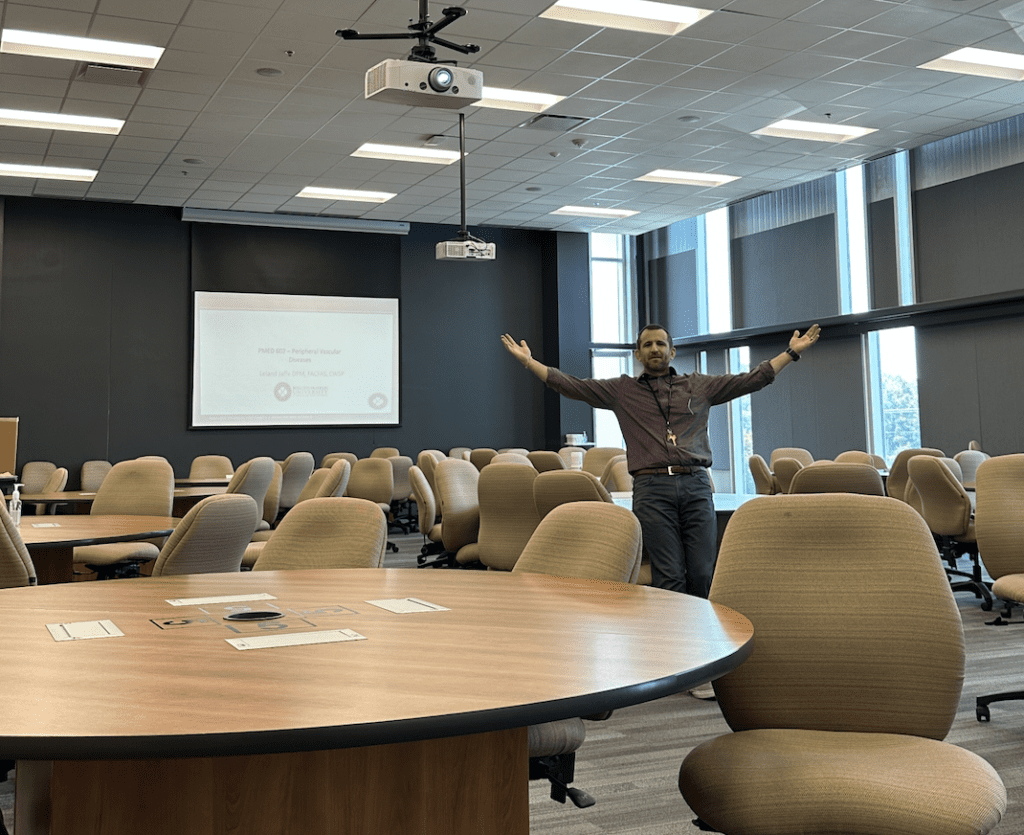Authored by Dr. Leland Jaffe; Associate Dean and Professor; Published on June 1st, 2024
Are you looking to bring new and innovative teaching methods into the classroom?!?
In recent years, the traditional classroom model has undergone a significant transformation with the rise of the flipped classroom model. This innovative approach has changed how students learn and engage with course material. So, what exactly is the flipped classroom method, and how does it work? These were a couple of the questions I had and I wanted to investigate this topic further to see if it would be compatible with the courses that I coordinate. This blog post outlines the definition of the flipped classroom model of teaching as well as its potential benefits and drawbacks.
What is the Flipped Classroom Model?
At its core, the flipped classroom flips the traditional model of instruction by reversing the typical sequence of learning activities. Instead of passively receiving traditional lectures during class time and completing assignments at home, students are assigned pre-class readings, online education, or other instructional materials to review during their own time before class. Then, during in-class time, students engage in active in-class activities, such as discussions, case studies, problem-based learning, or group projects, to reinforce and apply their understanding of the material.
The Benefits of A Flipped Classroom Method of Teaching
The flipped classroom approach offers several benefits for both students and educators. For students, the ability to review lecture content at their own pace outside of class allows for personalized learning experiences and greater flexibility in scheduling. Additionally, active learning during class promotes deeper engagement, critical thinking, and collaboration among peers. For educators, the flipped classroom provides opportunities to personalize instruction, assess student understanding in real-time, and provide targeted support to meet the students’ needs – ultimately making the best use of class time.
Below is a list of 10 advantages of the flipped classroom model of teaching:
1. Personalized Learning:
Students can review learning material at their own pace outside of class, allowing for personalized learning experiences tailored to individual needs and learning styles.
2. Active Engagement:
By shifting lecture content outside of class time, the flipped classroom promotes active learning during class sessions, where students engage in small group activities, problem-solving activities, and collaborative projects with the guidance of the teacher.
3. Deeper Understanding of Content Taught:
Engaging in active learning activities during classroom time allows students to apply their knowledge, ask questions, and receive immediate feedback from peers and instructors, leading to a deeper understanding of the material.
4. Improved Retention of the Material Taught:
The combination of pre-class preparation and active learning in the classroom has been shown to enhance retention of information and long-term memory recall compared to traditional lecture-based instruction.
5. Enhanced Collaboration:
The flipped classroom fosters student collaboration through group work, peer teaching, and interactive discussions, promoting teamwork and communication skills essential for success in the workforce.
6. Time Efficiency:
With lectures and content reviews occurring outside of class, valuable class time can be allocated to hands-on activities, problem-solving exercises, and in-depth discussions, maximizing the use of instructional time.
7. Immediate Feedback:
Instructors have more opportunities to provide immediate feedback and support to students during class sessions, addressing misconceptions, clarifying concepts, and guiding student learning in real-time.
8. Increased Student Accountability:
The flipped classroom method encourages students to take responsibility for their learning by actively engaging with course materials outside of class and participating in class activities prepared to contribute.
9. Flexibility and Accessibility:
The use of digital resources and online platforms for content delivery makes course materials accessible to students anytime, anywhere, catering to diverse learning preferences and accommodating students with varying schedules.
10. Empowered Learning:
By promoting self-directed learning, critical thinking, and problem-solving skills, the flipped classroom empowers students to become independent, lifelong learners capable of navigating complex challenges in their academic and professional lives.
What Are Important Considerations When Implementing the Flipped Classroom Model
However, implementing the flipped classroom method requires careful planning, preparation, and ongoing support from educators. Successful implementation hinges on selecting appropriate instructional materials and online videos, designing engaging and meaningful learning activities during class time, and fostering a supportive learning environment where students feel empowered to take ownership of their learning. Before implementing the flipped classroom model of teaching, educators should consider several key factors to ensure successful implementation:
1. Student Readiness:
Assess students’ familiarity with technology and their readiness for self-directed learning. Provide the necessary support and resources to help students navigate the flipped learning environment effectively.
2. Learning Objectives:
Clearly define learning objectives and outcomes for each class session to guide the selection of appropriate pre-class materials and in-class activities. Ensure alignment with course goals and curriculum standards.
3 Content Selection:
Choose or develop high-quality instructional materials, such as pre-recorded lectures, readings, videos, or interactive modules, that effectively convey essential course concepts and facilitate student learning. This will help prepare the students to have meaningful discussions and active learning activities during classroom time.
4. Technology Infrastructure:
Evaluate the availability and reliability of technology resources, such as online learning platforms, video lectures, and communication tools, to deliver and access pre-class materials and facilitate online interactions.
5. Accessibility and Equity:
Ensure that pre-class materials are accessible to all students, regardless of their technological proficiency, learning preferences, or socio-economic background. Provide alternative formats or accommodations as needed to promote inclusivity and equity.
6. Student Engagement:
Design engaging and interactive pre-class materials and in-class activities that encourage active learning, critical thinking, and collaboration among students. Incorporate opportunities for peer interaction and feedback.
7. Assessment Strategies:
Develop assessment strategies that align with the flipped classroom model and measure students’ understanding of pre-class materials, application of concepts during in-class activities, and overall learning outcomes. Formative assessments are an excellent way to assess students’ comprehension of the material taught in real-time.
8. Faculty Training and Support:
Provide professional development opportunities and support resources to help faculty members effectively design, implement, and evaluate flipped classroom activities. Attempt to foster a culture of collaboration and sharing best practices among educators.
9. Evaluation and Iteration:
Continuously evaluate the effectiveness of the flipped classroom model through student feedback, assessment data, and faculty reflection. Use insights gained to make iterative improvements and adjustments to the instructional design as needed.
10. Communication and Transparency:
Communicate expectations, guidelines, and procedures related to the flipped model to students, colleagues, and stakeholders. Foster open communication with students to address questions, concerns, and feedback throughout the implementation process.
While the flipped classroom model offers numerous benefits, it is important to consider potential drawbacks and challenges:
Technological Barriers:
Students may face challenges accessing or navigating online materials, particularly those with limited internet connectivity or digital literacy skills. This can exacerbate existing disparities in access to technology and impede students’ ability to engage effectively with flipped learning activities.
Time Commitment:
Preparing high-quality instructional materials for pre-class viewing and designing engaging in-class activities can be time-consuming for educators. Additionally, students may find it challenging to manage their time effectively and keep up with the workload associated with flipped learning.
Passive Learning Outside Class:
Some students may struggle with self-directed learning or lack the motivation to engage with pre-class materials independently. This can result in passive learning experiences outside of class and hinder their preparedness for in-class activities.
Accountability and Participation:
In a flipped classroom environment, there is a greater reliance on students to come prepared to class and actively participate in discussions and activities. However, some students may not fully engage with pre-class materials or contribute meaningfully during in-class sessions, leading to uneven participation and learning outcomes.
Resource Intensity:
Implementing the flipped classroom model may require investments in technology infrastructure, instructional design resources, and faculty training. This can pose financial and logistical challenges for institutions, particularly those with limited resources or competing priorities.
Resistance to Change:
Both students and faculty members may resist the shift away from traditional lecture-based instruction towards a more student-centered and active learning approach. Overcoming resistance to change and fostering buy-in from those involved requires effective communication, support, and evidence of the benefits of the flipped classroom model.
Assessment Alignment:
Designing assessments that align with the flipped classroom model and accurately measure students’ learning outcomes can be complex. Ensuring that assessments reflect both pre-class preparation and in-class activities while maintaining academic rigor and fairness requires careful planning and consideration.
Equity and Inclusion:
Flipped learning approaches may inadvertently exacerbate existing inequities in education, particularly for students from marginalized or disadvantaged backgrounds. Ensuring equitable access to technology, resources, and support is essential to promote inclusivity and mitigate potential disparities in learning outcomes.
The Flipped Classroom Method – Conclusion
The flipped classroom course design offers several advantages in higher education. By shifting the focus from passive learning to active engagement, students are empowered to be active participants in their learning. Pre-class preparation allows students to review content independently, facilitating personalized learning experiences. In-class activities, such as discussions, problem-solving exercises, and collaborative projects, foster deeper understanding and critical thinking skills. This approach not only enhances student engagement but also promotes retention of information and prepares students for success in their academic and professional endeavors. Overall, the flipped classroom technique aligns with the evolving needs of higher education by promoting active learning, collaboration, and a student-centered pedagogical approach.







